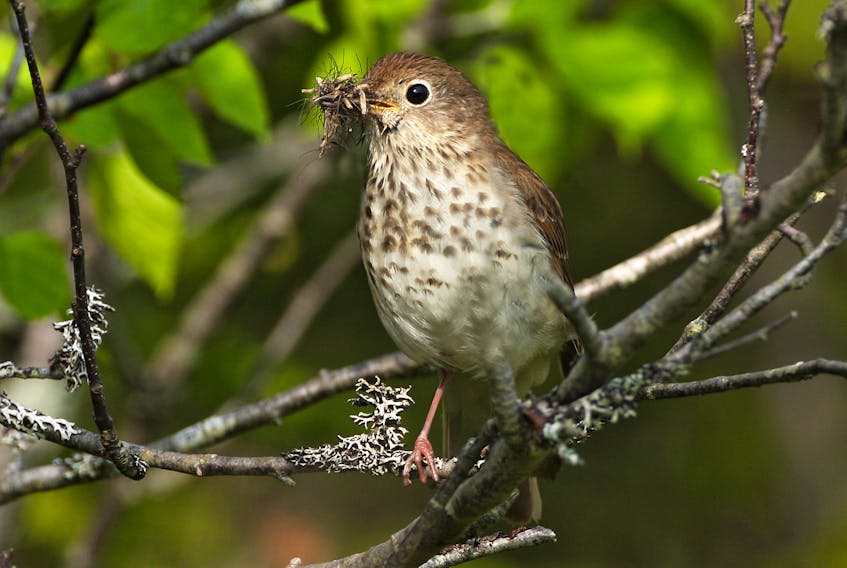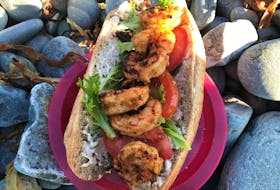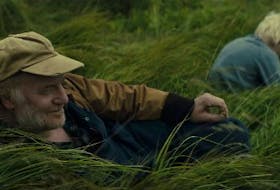Baby birds are coming into the world everywhere around us these days.
We see the young robins with the spotted breasts being fed by busy parents in the backyard. We hear the harsh calls of juvenile starlings following their parents around still dependant on them for food.
These are birds obvious in our urban settings but there are even more young birds unseen by us in the woods.

The woodland birds are busy collecting beaks full of insect life to bring home to always hungry mouths of the young. The adults are virtually run raged. They arrived in the spring in their most beautiful plumage of the year. But the plumage becomes worn and tattered during all that hard work of raising the young birds. Please remember that at this time of year finding a young bird sitting alone on the ground or in some unlikely place is commonplace.
It is absolutely the best idea to leave the young bird where it was found. They are not orphaned. The adults are mostly likely off looking for food to bring back to feed the youngster.
Rare Birds of the Week
Rarest bird of the last week was a shorebird called a ruff that was found by Dave Brown at Branch.
The male ruffs are unique among shorebirds because they wear a frilly mane during the breeding season. This bird was still wearing its black scarf much to the delight of quite a few birders that went to Branch over the following days to view this almost annual visitor.
Vernon Buckle had a brief visit from a white-winged dove at his bird feeder in Forteau.
This far-ranging dove manages to reach the province a couple times per year but is particularly unusual in Labrador.
An out of place northern mockingbird was nicely photographed by Ray Hann on Merasheen Island, Placentia Bay. Clara Dunne was very pleased to have a visit from a male ruby-throated hummingbird at her hummingbird feeder in Renews.
Frounce News
Most bird feeder operators have heard of frounce. It is a parasite that attacks the throat lining of a bird causing it to secrete mucus that prevents the bird from swallowing and thus eating. It kills birds. Finches are the most susceptible, especially the purple finch. The parasite is easily spread among birds feeding close together at the bird feeder. It is a summer time affliction that first made headlines in Newfoundland during the summer of 2017.
It has been a bigger problem in Nova Scotia and New Brunswick because they have a generally warmer climate. The parasite cannot tolerate freezing temperatures so most of the parasites die over the winter. However, a few survive and then they start the process all over again in the summer.
Last week there was an increase in suspected cases of frounce at Nova Scotia bird feeders.
And on 24 June I received a report from an east St. John’s feeder watcher of a purple finch with all the classic signs of being affected by the frounce parasite. I quote directly from the email.
“It’s feathers were ruffled and the bird was lifting its head up and tilting it back. The bird would hold a sunflower seed in its beak but couldn’t open it. Also it didn’t or couldn’t close its beak. The throat seemed swollen and the bird was unsteady on its feet. Not really a nice sight to see.”
If you see a bird like this at your feeder you should stop feeding the birds immediately. Bring in your bird feeders and sterilize them with a strong cleaning agent.
Also you should report it on a Facebook page called Newfoundland Birdwatching or to the email address at the bottom of this column. This will help spread the news and determine the how much frounce is around.
This is not a call for everyone to stop feeding birds. Not yet, but be ready to do so. The yellow cautionary flag is up. If a couple more suspected cases of frounce are reported then we should all stop feeding the birds for the summer. We want to nip frounce in the bud before it has a chance to take hold and kill more finches.
We all know the birds can survive perfectly well without a birdfeeder in the summer but that is not the point for the diehard bird feeder watchers. Feeding birds, even in the summer, is a daily enjoyment. Going cold turkey is easier for some than others.
In 2018 there were just a couple of widely separated cases of suspected frounce in the province. Let’s hope for even less in 2019. Meanwhile enjoy the birds you have in your garden and in the woods around you. Summer is a time of plenty and we waited a long time for these days.
Bruce Mactavish is an environmental consultant and avid birdwatcher. He can be reached at [email protected]
RELATED:









